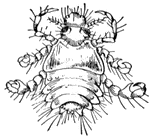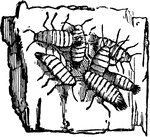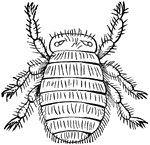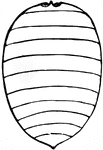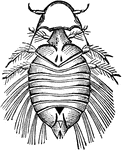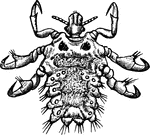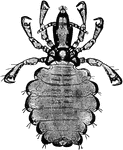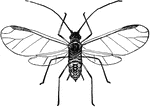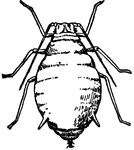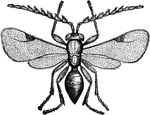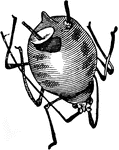Clipart tagged: ‘klice’

Ant and Plant Lice
Ants are very fond of a sugary liquid that Plant lice secrete. They will milk the bugs of this liquid.

Woolly Aphid Larva
The female woolly aphid larva (Schizoneura lanigera), a species of plant lice of the Eriostoma family.
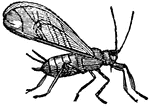
Winged Aphides, or Plant Lice
"They subsist on the sap of the tree; and are sometimes provided with wings, and are sometimes without."

Winged Aphides, or Plant Lice
"They subsist on the sap of the tree; and are sometimes provided with wings, and are sometimes without."

Wingless Aphides, or Plant Lice
"They subsist on the sap of the tree; and are sometimes provided with wings, and are sometimes without."
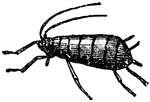
Wingless Aphides, or Plant Lice
"They subsist on the sap of the tree; and are sometimes provided with wings, and are sometimes without."
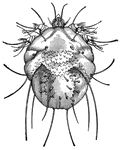
Head Louse
Head lice are parasites. That is any plant or animal which feeds upon another living plant or animal…

Magnified Louse
"A genus of insects, the type of a very numerous family, which forms the order Parasita or Auoplura.…

Apple Louse
"Aphis; a genus of small plant-sucking insects, of the family Aphididæ and order Homoptera."-Whitney,…

Apple Plant Louse
The females deposit their eggs, which are small, oval, and black, on twigs and bark in the autumn; the…

Apple Plant Louse
The females deposit their eggs, which are small, oval, and black, on twigs and bark in the autumn; the…
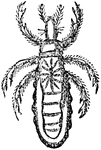
Crab Louse
Pediculus Pubis. The crab-louse is gray-black and is a much broader square form than the other two species…

Geranium Plant Louse
"Aphis; a genus of small plant-sucking insects, of the family Aphididæ and order Homoptera."-Whitney,…

Grape-Root Louse
Phylloxera Vastatrix, a grape-vine-root gall-louse, is by many entomologists supposed to be another…

Hop Louse
"Hop louse which lives on the plum tree in the late fall, winter, and early spring until the hop vines…
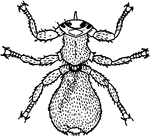
Sheep Louse
"A common dipterous insect, which feeds upon the blood of sheep and lambs."—Finley, 1917

Wood Louse
Wood-lice are commonly found under stones or in crevices of old walls. When disturbed, they curl up…

Wood Louse
Wood-lice are commonly found under stones or in crevices of old walls. When disturbed, they curl up…
